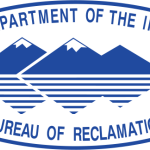- Branża: Government
- Number of terms: 15655
- Number of blossaries: 0
- Company Profile:
A U.S. Department of the Interior agency that oversees water resource management incuding the oversight and operation of numerous diversion, delivery, and storage projects the agency has built throughout the western United States for irrigation, water supply, and attendant hydroelectric power ...
A committee made up of local officials, citizens, and industry representatives charged with development and maintenance of emergency response plans for the local emergency planning district as per SARA Title III requirements. Planning procedures include hazardous materials inventories, plans, hazardous material response training, and assessment of local response capabilities.
Industry:Engineering
Dam safety related issues and concerns are those which, if not adequately addressed could/would:
1 - Lead to a failure or malfunction reulting in an uncontrolled release of stored water that would place the downstream population potentially at risk or;
2 - Compromise the agency's ability to detect developing adverse dam performance and prudently respond to that performance.
Industry:Engineering
The placement of a lockout device on an energy isolating device, in accordance with an estabilshed procedure, ensuring that the energy isolating device and the equipment being controlled cannot be operated until the lockout device is removed. Clearance procedure in which physical locks replace Safety Tags and prevent operating switches, controls, etc. See tagout and clearance.
Industry:Engineering
Used in appraisal and feasibility estimates to estimate overruns on quantities, changed site conditions, change orders, etc. Contingencies are considered as funds to be used after construction starts and not for design changes or changes in project planning. Appraisal estimates should have 25 percent added and feasibility estimates should have 20 percent added for contingencies.
Industry:Engineering
A laboratory compacting procedure whereby a soil at a known moisture content is placed in a specified manner into a mold of given dimensions, subjected to a compactive effort of controlled magnitude, and the resulting dry unit weight determined. The procedure is repeated for various moisture contents sufficient to establish a relation between moisture content and dry unit weight.
Industry:Engineering
Nutrient enrichment of a body of water that contains more organic matter than existing biological oxidization processes can consume. A body of water which has become, either naturally or by pollution, rich in nutrients and often seasonally deficient in dissolved oxygen. Reservoirs and lakes which are rich in nutrients and very productive in terms of aquatic animal and plant life.
Industry:Engineering
A graphical representation of the stage or discharge as a function of time at a particular point on a watercourse; a time-discharge curve of the unsteady flow of water. A graph showing, for a given point on a stream, river, or conduit, the discharge, stage, velocity, available power, rate of runoff, or other property of water with respect to time. This can be measured or modeled.
Industry:Engineering
The electric energy used in the operation of a plant. This energy total is subtracted from the gross energy production of the plant; for reporting purposes the plant energy production is then reported as a net figure. The energy required for pumping at pumped-storage plants is, by definition, subtracted, and the energy production for these plants is then reported as a net figure.
Industry:Engineering
The maximum thickness or width of a dam measured horizontally between upstream and downstream faces and normal to the axis or centerline crest of the dam, but excluding projections for outlets or other appurtenant structures. The base thickness of the crown cantilever of an arch dam. In general, the term thickness is used for gravity or arch dams, and width is used for other dams.
Industry:Engineering
A NEPA compliance document used to evaluate a range of alternatives when solving the problem would have a significant effect on the human environment. The EIS is more than a document, it is a formal analysis process which mandates public comment periods. An EIS covers purpose and need, alternatives, existing conditions, environmental consequences, and consultation and coordination.
Industry:Engineering
